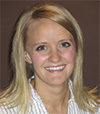Everyone wants enough replacement heifers to maintain or even grow their herd size. Producers have achieved this goal with relative ease throughout the past 20 years. While the trend during that time has shown a decline in the number of U.S. dairy cows, the heifer population has remained fairly constant. This means the heifer population as a percentage of the total cow population has been on the rise.

Figure 1 shows this growth in the heifer population, according to figures from the National Agricultural Statistics Service.
Why more heifers?
What factors caused this growth?
Many people lay the blame on sexed semen, when in reality many other factors have contributed to this growth over time.
While sexed semen has played its part, it was not heavily used on a commercial level until 2006.
This means the first females resulting from sexed semen were not born until 2007, which was the same time that the cost of replacement heifers hit a peak. Therefore, growth prior to and during that time must be attributed to other, more significant factors.
When you think about how the dairy industry has evolved, the best and most progressive producers have continually become more efficient and effective in all aspects of dairy herd management.
Advances in reproductive management have allowed people to get their cows pregnant more quickly. Estrus synchronization programs and more closely monitored reproduction programs have helped increase pregnancy rates on the most progressive dairies.
Another influence on the heifer population growth is improved maternity and calf management. Producers have focused on more effectively managing maternity areas to ensure more calves are born alive.
They have also become much more knowledgeable about calves, improving their feeding programs, ventilation systems and vaccination programs to yield a lower death loss and healthier replacements.
Calf and heifer management practices gained continual focus as heifer replacement costs were on the rise to their eventual peak in 2007.
When replacements were selling at premium prices, producers were more motivated to create as many healthy heifers as possible, with the knowledge they could sell their extra heifers for top dollar.

Table 1 shows the impact of increasing overall pregnancy rate, lowering death loss and dead-on-arrival (DOA) rates on a 1,000-cow dairy.
Increasing pregnancy rates, decreasing DOA rates and lowering death loss in calves has a lower direct cost than using sexed semen.
The drop in heifer conception rate from 60 percent using conventional semen to 45 percent using sexed semen, and therefore the extra days on feed due to this drop, are costs that need to be accounted for when determining the overall value of sexed semen.
As the table shows, other management factors have clearly played a larger role in increasing the heifer population than sexed semen alone. Adding 68 extra heifers per year to your herd from using sexed semen is great, but the return will be diminished if DOA rates and death loss have not first been properly managed.
Another factor that plays into the overall increase in heifer population as a percentage of the cow population is that producers now breed their heifers to calve at an earlier age.
Improvements in nutrition programs have promoted heifer growth to a point where their size allows for breeding months sooner than previously advised.
Dairies that are aggressive in enrolling heifers in an A.I. program and start breeding 30 days earlier than previously practiced can yield up to 20 extra replacement heifers for each month sooner that the heifers first calve, due to the quicker turnover in heifer population.
Economics drive the decision to create better heifers
At a time now when market reports show that heifer and bull calves are equal in value, and the market price for replacement heifers is less than the cost of raising them on your own, producers should question whether the current market dynamics encourage the use of sexed semen.
Information about a growing heifer population paired with current market prices makes it hard to justify the added cost of sexed semen and the lower conception rates resulting from the use of it.
The decision of whether and how to use sexed semen is ultimately for each producer to decide based on his or her own economic situation, future plans and genetic strategy.
Those raising Holsteins have a different market than Jerseys, where bull calves are worth less than heifers and valued at essentially nothing. And farms in expansion mode will have different economic situations than those at a static size.
However, when considering the current market dynamics and prices for males and females, it becomes quite logical that usage of sexed semen at the current time should be to create âbetterâ heifers, not more heifers.
The key to this statement is the definition of better. Better heifers mean those that are genetically superior. Continually improving the genetics in your herd is a simple way to drive future profit on your dairy. However, to drive this in the right direction, you need to have a sound genetic plan, not only for selection of males but also for females.
A focused approach to sexed semen usage can certainly make it worth the investment. To accomplish this, it is imperative to set a customized genetic plan to meet your farmâs goals and then use your index to rank heifers based on their genetic potential.
Only you can decide how much emphasis your dairy should place on production, health and conformation traits.
This information can be used to separate your top-end heifers from the rest and therefore help you determine which heifers are the most logical candidates for sexed semen usage.

On those top-end heifers, use sexed semen from the best bulls that fit your genetic plan, rather than the cheapest sexed semen available, in order to make the most progress (see Figure 2 ).
Follow up with conventional semen on the remainder of heifers, and with the right management focus on keeping those alive, your herd will still grow.
And this growth will include more of the genetically superior and profitable animals, making them worth that extra investment to raise.
In conclusion
Management focus and factors such as pregnancy rate, DOA rate and calf survival have had a bigger impact on the number of heifers than sexed semen.
With the current economic situation, the use of sexed semen needs to be very focused because creating females that are worth the same as males for a higher input cost with lower reproductive rates does not make sense unless you use sexed semen in a focused way to create better heifers, not more heifers.
This can drive genetic progress, which may not have a cash-flow impact today but will certainly have an impact over the long haul. PD
Nate Zwald is the U.S. sales manager and Chrissy Meyer is the marketing editor for Alta Genetics. Contact Nate by email or Chrissy by email .

Nate Zwald
U.S. Sales Manager
Alta Genetics











